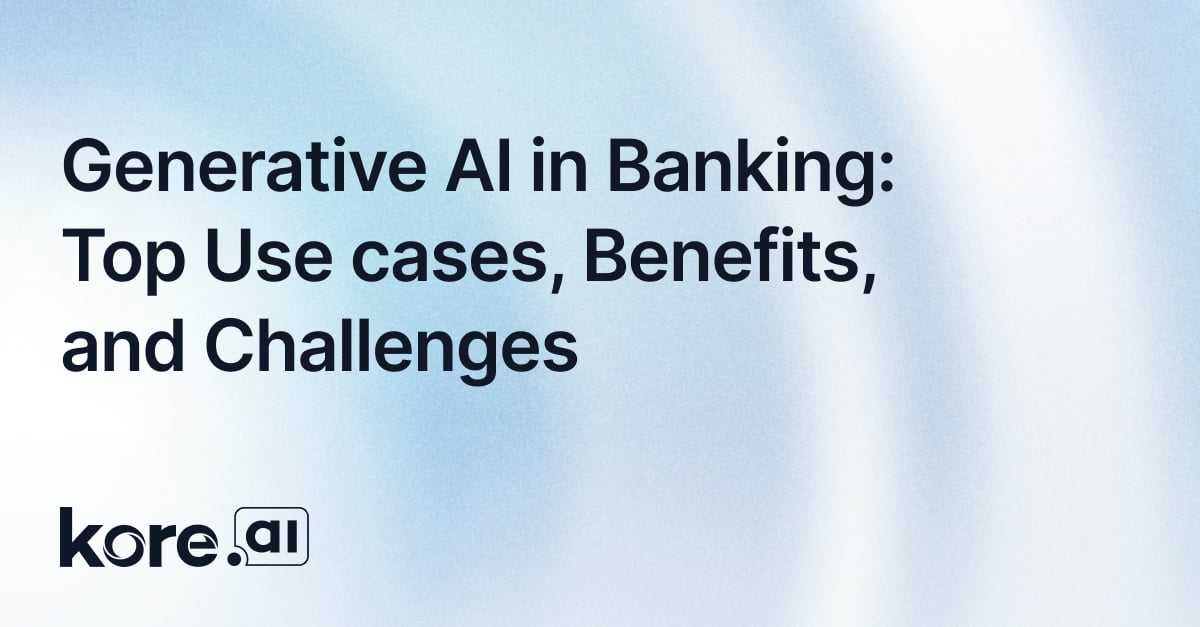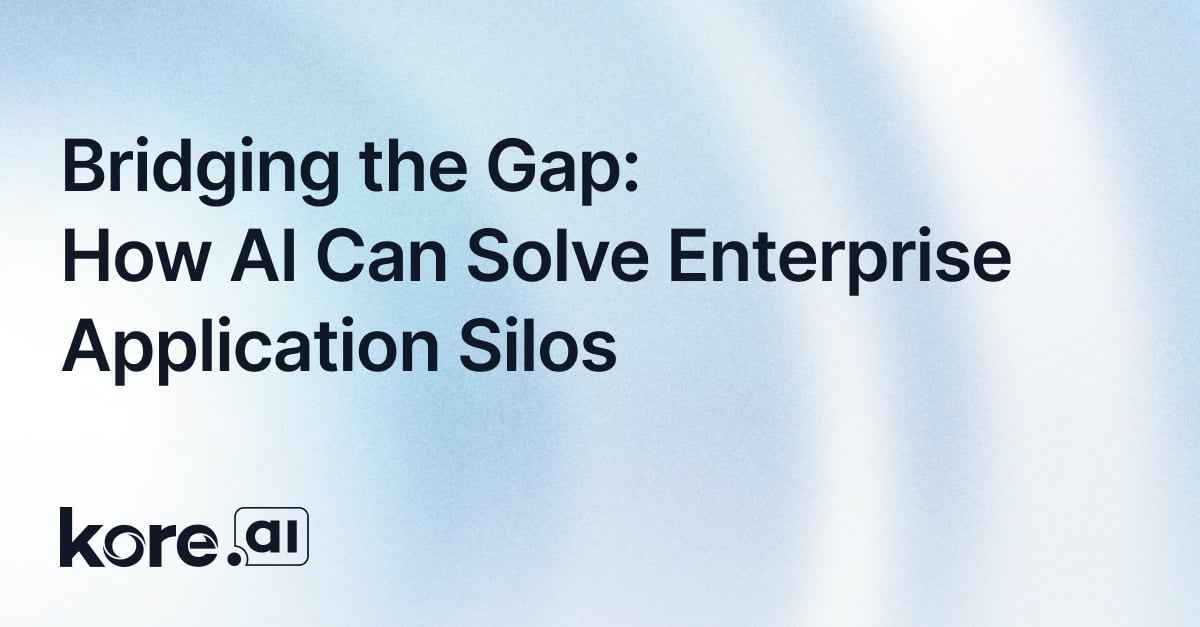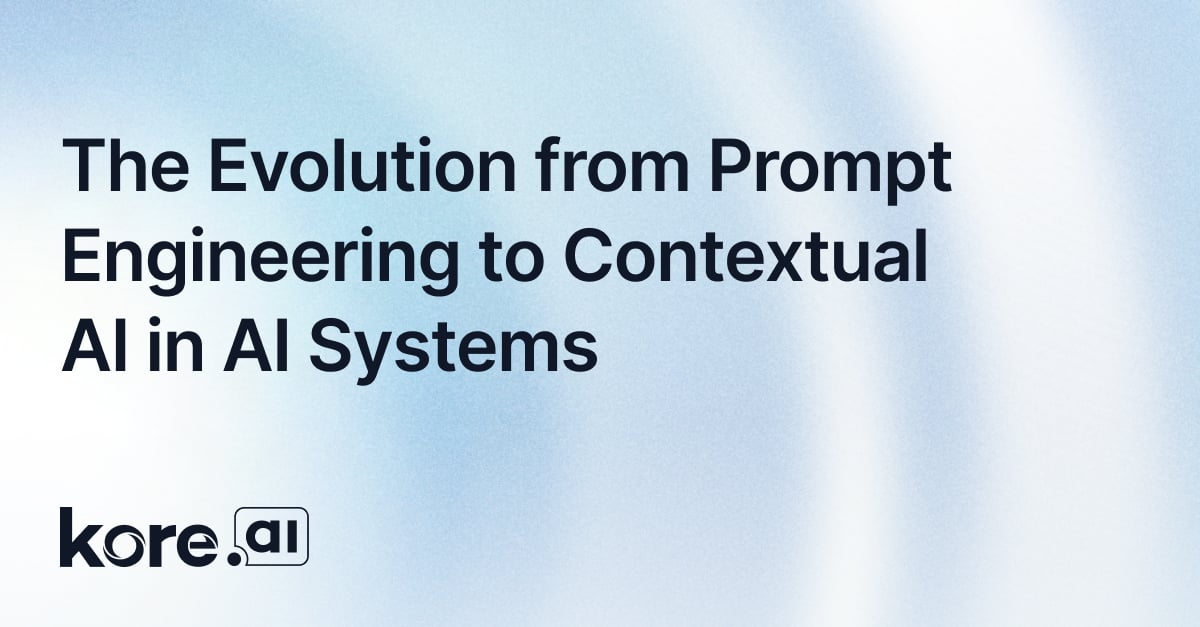The sheer amount of pressure the banking sector faces in 2025 is staggering. Every institution, from global giants to regional banks, finds itself squeezed between outdated processes, rising cyber threats, and customers who expect a truly personalized experience. For many banks, these challenges are daily reality, threatening their business survival.
This is exactly where generative AI (GenAI) is shaking the banking industry. GenAI not only streamlines manual workflows at speed but also delivers hyper-personalization at scale, helping institutions get ahead of cyber threats, adapt to regulatory change, and restore customer trust, all in one go.
According to McKinsey, GenAI could inject $200 billion to $340 billion annually into the banking industry, boosting profitability by as much as 15%.
This isn’t just a futuristic vision; it’s already happening. Banks, like Boost, Tyme, and UNO Digital Bank, are using generative AI to race ahead, creating an entirely new era of banking. They now offer faster and more personalized services than traditional banks, which, shackled by outdated systems and slow-moving regulations, are struggling to match.
So, how are they doing it?
Let’s take a closer look at how these digital disruptors are leveraging generative AI in banking.
Key takeaways:
1. Generative AI is transforming banking
enabling hyper‑personalization, automation, and smarter risk management to boost efficiency and customer satisfaction.
2. Digital‑first banks are ahead
banks like Boost, Tyme, and UNO use generative AI to deliver faster onboarding, inclusive credit, and AI‑driven growth.
3. Traditional banks must act now
Kore.ai’s solutions help modernize legacy systems, ensure compliance, and match digital‑first agility without full overhauls.
What is generative AI in banking?
Generative AI, powered by sophisticated machine learning and large language models (LLMs), is redefining how banks approach automation, decision-making, and customer engagement. In the past, many banking processes, from onboarding customers to detecting fraud, were labor-intensive, fragmented, and often slow to deliver results. Generative AI is changing that, enabling institutions to handle in minutes what once took days or weeks.
Whether it’s powering smarter, more human-like conversations through advanced chatbots, analyzing vast datasets to forecast market movements, or tailoring products to individual customer profiles, the scope of GenAI in financial services is expanding at pace.
But the real question is, what does generative AI in banking look like in practice?
D.K. Sharma, President & COO at Kore.ai, said that “GenAI is already streamlining previously manual tasks like FAQs, fraud detection, and onboarding by harnessing the speed, consistency, and scale of Large Language Models (LLMs) that traditional methods can’t match.”
In the next section, we’ll explore several high-impact use cases, from personalization at scale and breaking from legacy constraints to automation and customer acquisition, that are not just improving efficiency but reshaping the very experience of banking.
What are the top generative AI use cases in banking?
We may only be at the dawn of the generative AI era, but its potential to reshape banking is already clear. From automating complex processes to redefining customer experiences, the possibilities are vast. Let’s take a closer look at how GenAI is being applied in modern banking today.
1. Breaking free from legacy constraints
For many traditional banks, there’s one challenge that looms larger than most: Legacy systems. Think of them as enormous cargo ships, solid and reliable in their day, but painfully slow to turn and built for a very different era. Updating these aging infrastructures is costly and time-consuming and often means trying to innovate while dragging a heavy technological anchor.
Here generative AI can offer a powerful way to bridge the gap between old and new. It enables even established institutions to inject agility, efficiency, and innovation into their operations without needing a wholesale system overhaul.
Take Boost, for instance. Operating across Southeast Asia, Boost has seamlessly integrated generative AI into customer interactions via WhatsApp. This isn’t just about chatbots; this is about creating a frictionless customer experience that simplifies everything from onboarding to loan applications. Karthik Bhaskaran, Boost’s CTO, highlights how generative AI enables them to scale customer support and service while keeping overhead low. With generative AI, Boost never had to worry about legacy baggage that allowed them to innovate quickly and meet customer needs faster than traditional banks.
Generative AI gives banks the freedom from legacy systems, giving them the speed and flexibility to adopt new technologies as they come.
2. Personalization at scale: the GenAI advantage
Today, personalization is no longer a pleasant extra but has become a non-negotiable expectation. Consumers want services that feel uniquely theirs, shaped around their habits and lifestyle, and even unspoken needs.
This is where GenAI in banking comes into its own, delivering a depth of personalization that traditional banks struggle to match.
Digital-first banks are using AI to hyper-personalize their services, offering a level of customization that’s not just reactive but proactive.
Take Tyme, for example. By analyzing customer behavior in real-time and customizing loan offers based on spending habits, Tyme ensures every interaction feels timely and personalized. This goes beyond traditional personalization; generative AI turns these moments from chance encounters into deliberate, needs-based experiences.
UNO Digital Bank takes it even further. They’ve tapped into AI-driven underwriting to provide credit to people traditionally excluded from traditional banking systems. Through GenAI, they’re using alternative data sources, such as device information and bank statements, to offer credit to a much broader group of people. Kalidas Ghose, UNO’s chairman, points out that generative AI allows them to move beyond the narrow credit scoring models traditional banks rely on, providing more inclusive and personalized services.

Efficiency and automation: A new era of operational excellence
In banking, “efficiency” can sometimes feel like an empty promise. But for digital-first banks, powered by generative AI, it’s a very real, measurable advantage. They’re not just polishing old processes; they’re reinventing them for an AI-first world. By automating repetitive, time-consuming work, they free up people and resources to focus on higher-value services, all while keeping costs lean.
Tyme automates a surprising number of tasks. For example, they handle subpoenas and legal requests through AI, a once tedious process that required significant human resources. Now, it’s handled quickly and efficiently, allowing employees to focus on more strategic tasks and customer service. The result? Faster, more efficient service, without sacrificing accuracy or compliance.
Meanwhile, UNO Digital Bank uses predictive analytics to optimize credit risk assessments and decision-making, allowing them to make lending decisions in real-time. By automating these processes, UNO cuts down the time it takes to offer loans and services, speeding up their entire operation.
These banks are showing that efficiency isn’t just about cutting costs, it’s about creating more intelligent, streamlined processes that enhance the customer experience while reducing friction.
Customer Acquisition: AI-Driven Success
Customer acquisition is one of the most critical metrics for any bank, but digital-first banks have a significant advantage. They’re using AI-powered marketing to run sophisticated, real-time A/B tests and optimize customer engagement like never before. This level of agility is something traditional banks can’t replicate, and it’s giving digital players an edge in the market.
Tyme is using AI-driven marketing campaigns to better understand customer preferences and tailor messages accordingly. By testing multiple approaches simultaneously, they can refine their messaging in real time, ensuring they hit the right note with each potential customer.
On the other hand, Boost uses conversational AI to engage potential customers via platforms like WhatsApp, guiding them through the sign-up process and answering questions without the need for human intervention. The result is not only a better experience for the customer but also a much lower cost per acquisition. By streamlining customer acquisition processes, Boost is able to expand quickly without the overhead costs associated with traditional banks.
These digital-first banks are revolutionizing how to acquire and engage customers. The key here is that AI allows them to focus on building relationships rather than just pushing products. Customer acquisition is not just about gathering leads; it’s about nurturing them into long-term, loyal relationships.
What is the future of generative AI in banking and finance
The future of banking is unfolding today, driven by the transformative power of generative AI. This technology is poised to become the backbone of financial services, revolutionizing how banks deliver efficiency, personalized customer experiences, and automation across their operations.
Generative AI’s ability to analyze vast amounts of data and generate actionable insights allows banks to automate complex tasks, offer tailored financial advice, and detect fraudulent activities with increasing precision. These capabilities are setting new standards for operational excellence and customer engagement alike.
Banks are already capitalizing on these advantages, exploring innovative domains such as decentralized finance and predictive analytics to expand their offerings and sharpen their competitive edge. Their momentum is only set to increase as generative AI continues to unlock previously unimaginable possibilities.
For traditional banks, embracing generative AI is no longer a choice but a necessity. The considerable benefits enjoyed by digital-native players highlight the urgency for legacy institutions to modernize rapidly. Those that fail to integrate and leverage generative AI risk falling behind in a swiftly evolving financial landscape.
Looking ahead, generative AI will play a crucial role in redefining credit risk assessment, improving compliance through intelligent automation, and enhancing the personalization of banking services on a scale never before possible. By embedding these technologies within their core systems, banks can not only reduce costs and streamline decision-making but also build the resilience needed to meet future challenges head-on.
As GenAI evolves into agentic AI, holding back only leaves room for faster, more agile competitors to set the pace. In fact, McKinsey reports that banks implementing AI for KYC agentic workflows realize 200% to 2,000% productivity improvements, since one human can supervise 20+ AI agent workers.
What are the challenges and risks of generative AI in banking
While generative AI brings remarkable possibilities to the banking sector, it is important to recognize that it is not a cure-all solution. Like any advanced technology, GenAI comes with its own set of challenges and risks that banks must carefully manage.
1. Handling customer data
One of the primary concerns involves the handling of sensitive customer data. Generative AI systems rely heavily on vast datasets, which makes strict data privacy and security essential. Banks must ensure that personal information is protected, anonymized where necessary, and used in compliance with regulations such as GDPR or the CCPA. Failure to do so could lead to serious legal consequences and damage customer trust.
2. Ensuring fairness
Another challenge is navigating the complex regulatory landscape, and ensuring transparency and fairness in AI-driven processes remains an ongoing challenge. Banks must invest in building robust governance frameworks, including explainability measures that allow AI decisions to be audited and understood by all stakeholders.
3. AI hallucinations
One of the most significant limitations is the potential for errors known as "AI hallucinations," where generative models might produce inaccurate or misleading outputs if their training data is incomplete or flawed. This poses a real risk in financial decisions, such as credit assessments or fraud detection, where accuracy is paramount. Thus, maintaining high-quality, up-to-date data is vital to ensure reliable AI performance.
4. Need human oversight
The current best practice is to use generative AI as a powerful assistant rather than the ultimate decision-maker. Critical decisions, particularly those affecting customers’ finances, like loan approvals or investment advice, should remain under human oversight. AI can perform the heavy lifting of data analysis and process automation, but final judgments should rest with qualified professionals who can apply context and ethical considerations.
The way forward: Embracing the AI era in banking
The banking revolution isn’t just a passing trend; it’s a glimpse into the future of finance. For traditional banks, this is a wake-up call to embrace agility, innovation, and customer-centric strategies powered by AI. The good news? It’s not too late to leapfrog ahead.
By investing in AI-driven solutions, banks can modernize their operations, enhance customer experiences, and gain a competitive edge in a rapidly evolving market. Tools like agentic AI, generative AI, predictive analytics, and agentic workflows can help create smarter, more personalized services without the need for massive overhauls.
The journey starts with strategic decision-making. Leaders must identify high-impact use cases, streamline legacy systems, and foster a culture of innovation to unlock AI’s full potential. Whether it’s simplifying customer interactions, improving risk management, or scaling personalized services, the opportunities are boundless.
As D.K. Sharma, COO & President at Kore.ai, puts it, “The financial institutions that will thrive aren’t the ones that lean entirely on automation or stubbornly resist it. They’ll be the ones that blend both—harnessing AI for speed and scale, while doubling down on the uniquely human elements that build relationships.”
Conclusion
In the rapidly shifting world of financial services, one thing is clear: the AI era isn’t just arriving; it’s already here. Banks that embrace generative AI today will be the ones leading tomorrow.
At Kore.ai, we specialize in bringing these possibilities to life for the banking and financial sector. Our enterprise-grade, AI-powered banking solutions enable banks to automate customer interactions, streamline operations, and deliver truly personalized digital experiences, all while meeting the highest standards of security and compliance.
With Kore.ai your bank can offer:
1. Personalized service
Personalized, context-aware interactions make customers feel valued, strengthen relationships, and transform banking experiences from generic to meaningful.
2. Smarter banking operations
AI-powered automation and agent assistance streamline operations, reduce inefficiencies, and empower employees to drive productivity, compliance, and growth.
3. Faster resolutions
Automation streamlines workflows, scales operations, cuts costs, and frees agents for high-value tasks, boosting service quality and customer satisfaction.
If you’re ready to reimagine how your bank engages customers, reduces operational costs, and competes at digital-first speed, Kore.ai can help you get there.
Click below if you wish to explore how our AI solutions can transform your operations and unlock new opportunities for growth. {Demo link}
FAQs
Q1 - How is generative AI used in banking and finance?
Generative AI is used in banking and finance to automate complex processes and enhance customer interactions. It analyzes large volumes of customer and transaction data to create personalized financial solutions, automate routine queries via chatbots, and streamline operational workflows such as loan processing and compliance reporting.
Q2 - What are the applications of using generative AI in banking and finance?
With Kore.ai, banks use GenAI for fraud detection, credit risk analysis, conversational banking, document automation, compliance assistance, and personalized product recommendations, all integrated seamlessly into existing systems.
Q3 - What are the use cases of GenAI in banking?
With Kore.ai's BankAssist solution, your bank can use GenAI to:
Automate account opening and service requests
Provide real-time payment and transaction support
Detect fraud and anomalies instantly
Offer hyper-personalised financial advice
Speed up loan processing with AI-driven underwriting
Q4 - What are the limitations of AI in banking?
GenAI must be implemented with secure data handling, strong compliance measures, and human oversight. Kore.ai addresses these challenges with enterprise-grade security, GDPR/CCPA readiness, and transparent AI governance.
Q5 - Will banking be replaced by AI?
Generative AI will significantly change the way banks operate, but it will not replace banking. AI augments banking, not replaces it, automating routine tasks while empowering staff to deliver faster, smarter, and more personalized service.










